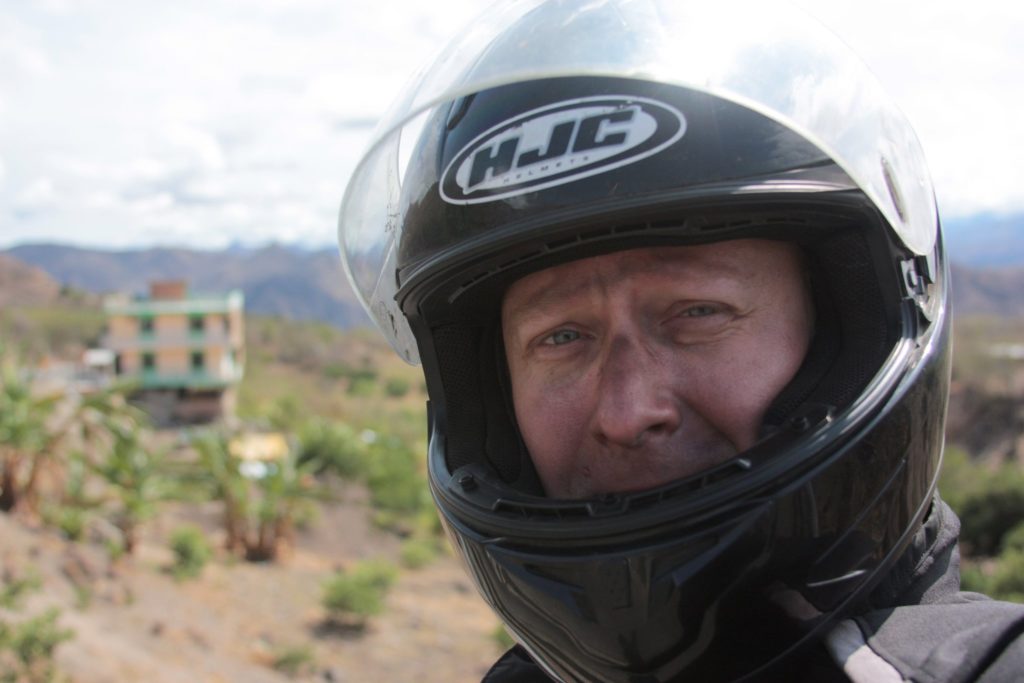
Martin Bauman hosted me on his podcast Story Untold to talk about the journey that led me to research and write a travel memoir about my Mennonite culture. Have a listen!


Martin Bauman hosted me on his podcast Story Untold to talk about the journey that led me to research and write a travel memoir about my Mennonite culture. Have a listen!

The Red Mill, the main building of the Vermont Studio Center, in the year’s first snowfall.
I’m at the Vermont Studio Center, in Johnson, VT for a month-long writing residency. The art center is based in repurposed turn-of-the-century buildings in the center of town — houses, church, grain mill, dance hall, gymnasium — all turned into studios, housing and dining hall. It’s a lovely place with about 50 residents in addition to a large community of staff artists and writers. I’m here to work on a series of essays.
Writing residents are given opportunities read their work to the community in regular readings held in the Lowe Lecture Hall, a wonderful old converted theatre. I chose to read from the manuscript of Menno Moto: A Journey in Search of Identity. It’s the first time I’ve read any of this work publicly, and I hope there will be many more readings once it gets published. You can listen to an audio recording of the reading here:
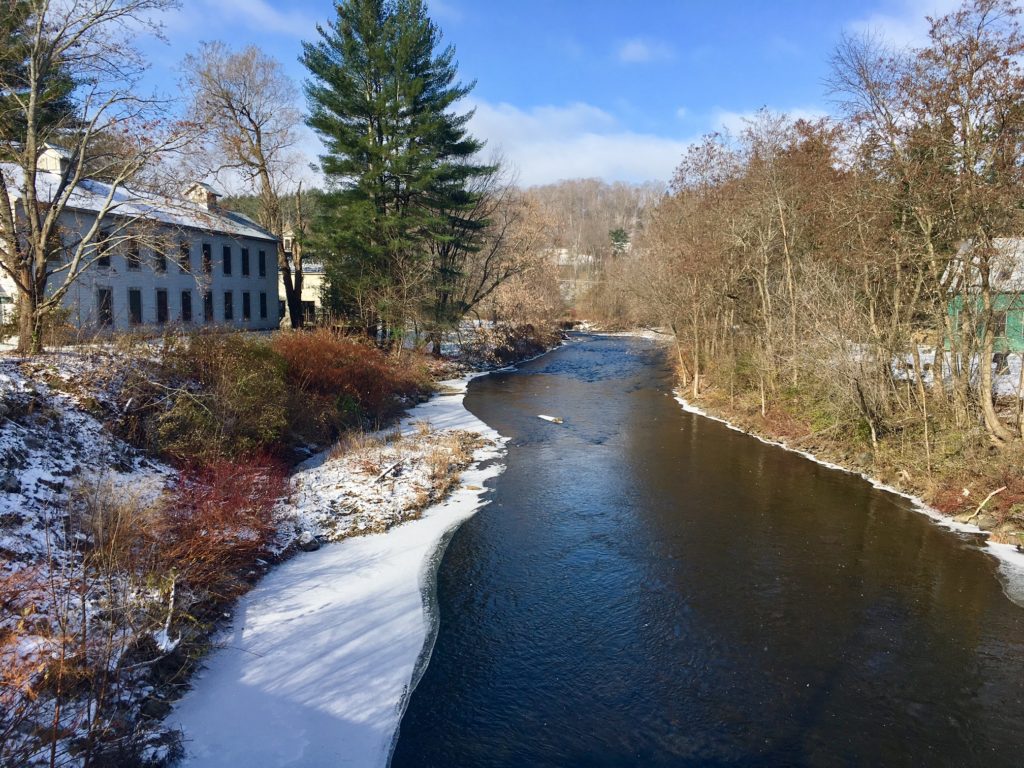
Maverick Studios, where I have been sat writing for the past month, on the banks of the Gihon River
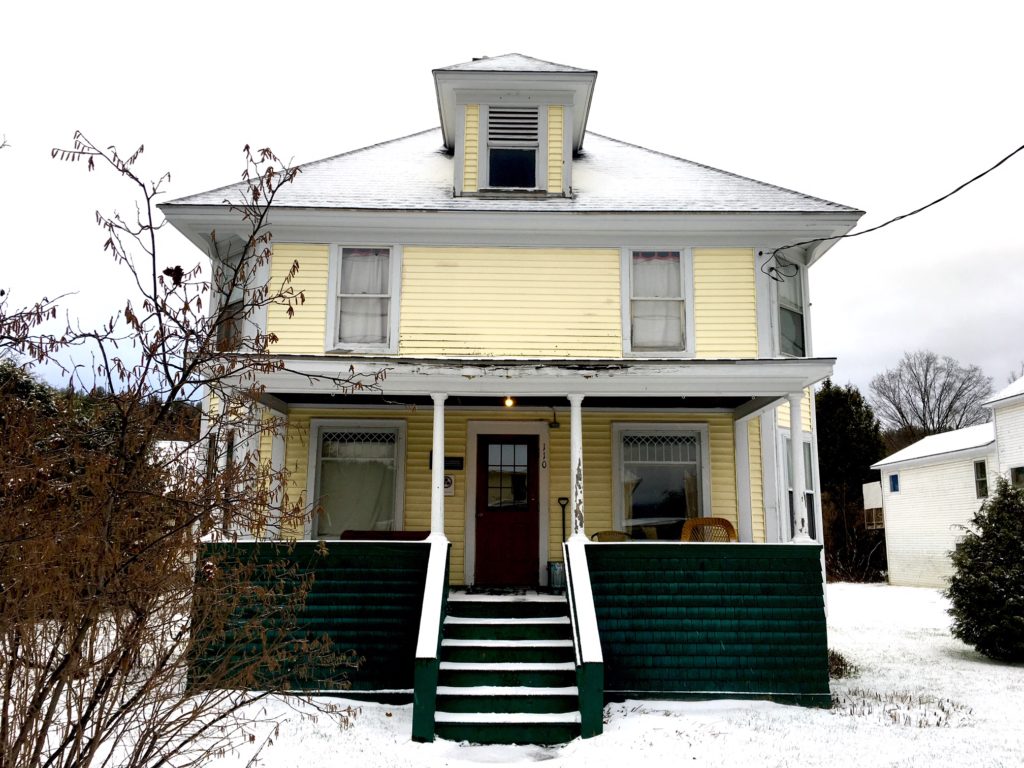
Bradley House, my home for the past month.
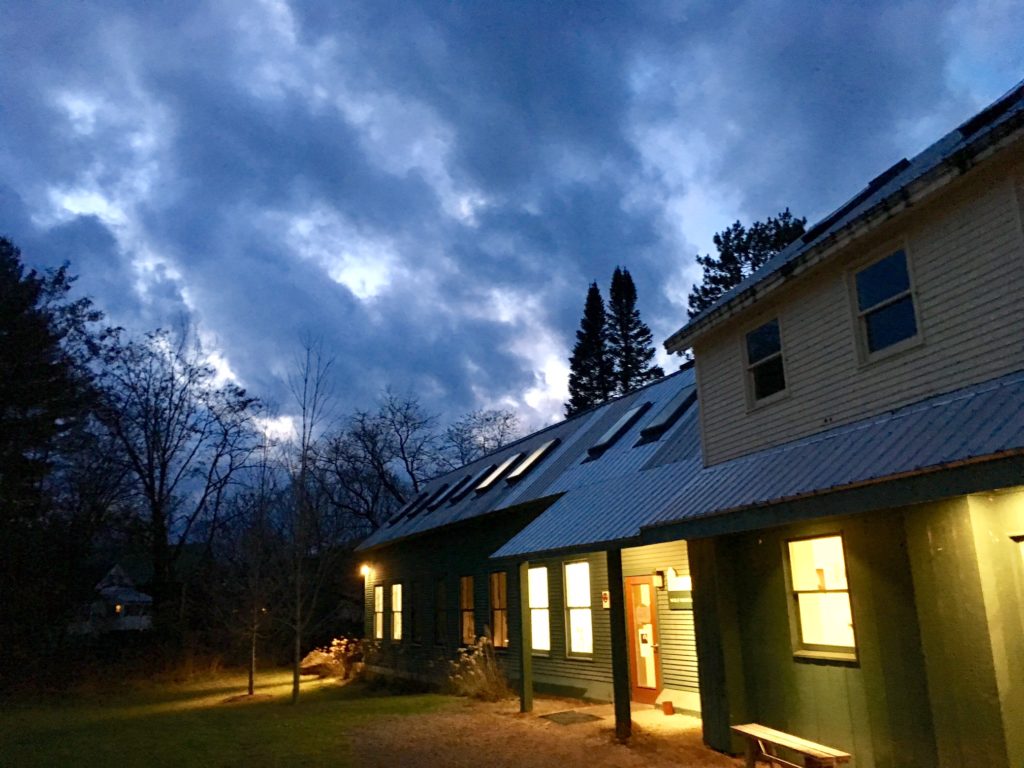
Wolf Kahn Studios, filled with incredibly talented visual artists.
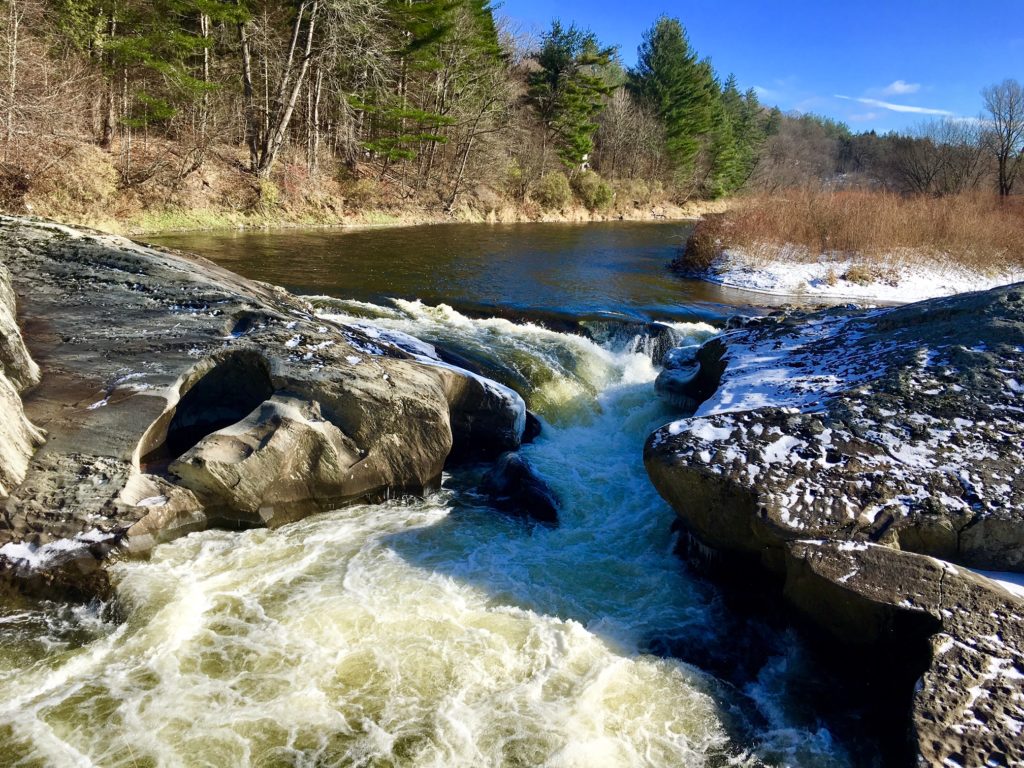
Dogshead Falls on the Gihon River
Earlier this year I went on a kayak and dive adventure in Raja Ampat, Indonesia. Here is the story that ran in the SCMP, and a photo essay on the Canoe & Kayak website.
There’s the muffled rattle of floorboards as someone walks across the platform you’re living on. Parrots, hornbills and a score of other exotic birds chirp and trill overhead. There’s the hiss of waves hitting the shore and maybe the splash of fish. But other than that … silence.
Raja Ampat, an archipelago in the Indonesian state of West Papua, is less densely populated than the Western Sahara, but this undeveloped, remote corner of Asia is home to the greatest diversity of marine life and coral reef ecosystems on Earth.
Scuba divers have been exploring this marine paradise for a few years and live-aboard dive boats are a common sight, but for land-based tourists, the region’s back-to-basics homestays are the best way to immerse oneself in Papuan life.
A 35-hour string of flights, ferry rides and car journeys from Hong Kong deposits us at Mando’s, a homestay built typically of bamboo and palm fronds on stilts over the sea. Home life in Papua takes place on wooden platforms, each having several rooms or huts on it, for cooking, eating and sleeping. As at most homestays, meals at Mando’s are served family style.
The dive industry here is largely operated by Indonesians from other parts of the country, but homestays are owned and operated by Papuan families. They form a bridge between the life on the sea that is so central to Papuan culture and the wild, forested islands that provide wood, food and fresh water.
Mando’s is on the main island of Waigeo and within driving distance of Waisai, the grimy little capital of Raja Ampat and the only place on the island where you can buy supplies. The views from the dining room – a table under a grass roof – make for disjointed conversations.
“So after that we caught a flight to … Oh look!” a traveller exclaims. Everyone around the table cranes their neck. “A school of dolphins.”
Or a jumping manta ray, a fish leaping from the water, a surfacing turtle, an exotic bird soaring across the sky. After a few days, dolphins are no longer newsworthy, and the challenge becomes catching sight of a leaping manta ray. All I ever see is the splash.
Waigeo is home to the rare Wilson’s bird-of-paradise, a red and blue beauty that can be spotted on a morning hike in the jungle. At night, glow worms ( Odontosyllis enopla) flicker bright green in the sea as they pump out bioluminescence to attract a mate.
Many homestays are in remote locations and neighbours may be 20km down the coastline or across the open sea. Island hopping takes planning, patience and time. There is practically no scheduled inter-island transport and few of the islands have roads, making privately hired longboats the most convenient mode of travel.
Longboats also allow you to see the karst topography, and explore small islets so undercut by waves they look like mushrooms. We weave through the islands, staring down into the crystal-clear water at endless coral reefs, schools of colourful fish and small sharks.
Raja Ampat’s coral reefs have shown greater resilience to the bleaching caused by rising sea temperatures than others around the world, and conservation efforts have greatly increased fish populations in the protected areas, but the flourishing marine life attracts poachers.
The Indonesian government has taken a strong stand against commercial fishing and created large protected areas, but this region is also rich in other natural resources. The largest gold mine and the third-largest copper mine in the world are nearby, and the Papua region is Indonesia’s largest source of tax revenue. That has attracted a large military presence, and many activists have disappeared, been killed or been jailed.
The Raja Ampat Research and Conservation Centre is one of the best established community development groups in the archipelago, and a key local partner of many international conservation organisations. The centre trains Papuans to build boats and then guide tourists on kayaking tours in those boats – the same development plan used for the homestays – provides research facilities and operates educational programmes.
“Our goal is to support those living in this beautiful and fragile ecosystem to have better, healthier lives and make them stewards in protecting this natural environment,” says Tertius Kammeyer, who heads the centre’s kayaking operations.
Tourism is growing rapidly and new homestays are popping up on every island, but outside of peak seasons, when domestic travellers come to Raja Ampat, there’s a good chance you’ll have one to yourself.
Time loses its meaning when you’re living in a grass hut. There are no clocks or timetables; meals are served when they are ready.
Circumnavigating the island of Gam makes for a pleasant three- or four-day trip by motorboat from Waisai. It is not one of the “regal” islands – Raja Ampat means “four kings” – but Gam is near the centre of the archipelago, and has plenty of small bays along its coast. On a clockwise trip around the island, a first night might be spent in Arborek Village, on a sandy spit of an island just off Gam.
In Arborek, there is a daily reminder of passing time; the village bell – an empty fuel canister – is rung at dawn, gently awakening the village from its slumber. After breakfast on the beach, we paddle to nearby Manta Sandy, a sandbar where mantas come to feed on plankton and allow fish to clean them of parasites. We slip on snorkel gear and drop into the water, and within moments mantas with wing spans of several metres appear out of the blue. Watching them glide effortlessly through the water makes our boat travel seem a lot less elegant.
Yet there is no other way to get to Warikef, an isolated homestay in a quiet bay near the Kaboei Passage, a narrow, winding stretch of water that separates Gam from Waigeo. Strong tidal currents in the passage offer divers and snorkellers an exhilarating underwater ride among the fish and coral fans.
Warikef backs onto a steep, forested cliff, just below a cave that supplies a steady stream of fresh water. The sea beneath the platform teems with life, and just because we’re not in the water, doesn’t mean we’re not considered part of a food chain. I feel a splash of water on my foot as an archerfish mistakes me for an insect and shoots a carefully aimed stream of water between the planks. A book left on the floor gets soaked as the fish make repeated attempts to capture it for lunch.
As the sun sets, the jungle surrounding Warikef falls silent and the glassy sea reflects the last light of the day. I can hear the muted voices of the host family chatting as they cook our dinner. There is the hiss of a gas stove and rattle of pots, the entire platform swaying gently as they move about.
The generator is broken, and the only light comes from a flickering oil lamp. I lay on the decking and watch the stars come out, forgetting for a moment that a less-tranquil world exists.
I recently spent a day at the race tracks in Zhuhai, which is just across the border from Hong Kong. I was invited by Torben, a good friend of mine, who has been distracted away from his long-running passion of yacht racing to take up car racing. Here’s the story I wrote about the experience for The Peak magazine. Click on the image to download the pdf of the story. 
The New Northwest Passage iPad is finally here! Relish Design of Winnipeg have been working on this for several months, and today it is finally available for sale on iTunes. Click here to buy it! The best news is that 10% of each sale goes to the World Wildlife Fund’s Global Arctic Program.
Written and created for sailing enthusiasts and environmentalists alike, you’ll be able to explore isolated Inuit communities, experience modern Arctic life and learn about climate change that’s affecting the North with rich video, photography and interactive maps. Experience life in the arctic on iPad and iPad mini.
For your listening pleasure…a rambling and eclectic three-part interview conducted by Bruce Connolly of Radio Beijing. He was a wonderfully interesting person to chat with, and it’s a shame he edited out his own stories. I suspect he has a much more riveting, and certainly eccentric, story to tell than I do. He’s one of those guys that when you name a place on the globe, any place, he goes (in that lovely Scottish accent of his), “Ah yes, back when I was there in ’72 it was still under dictatorship and this guy I met…” and then you’re off and running on another yarn.
Click on the links below to listen to the MP3 files.
You can listen to more of his work for RBC right here.
Die Mennonitische Post, arguably the widest read and most influential Mennonite newspaper in the America’s, did a short story about my trip. You can download the pdf file here. FYI, it’s in German.
48º North, a Seattle and NW US sailing magazine, did a story about my book The New Northwest Passage. You can read the story by clicking here. It will open an online pdf viewer at the contents page of the magazine. The article starts on page 44, and the link is the second from bottom on the contents page.
Grant Lawrence interviewed me for his new show on CBC Radio One, called The Wild Side. I told him about sailing the Arctic, eating grizzly bear, and why I set off on the adventure in the first place. You can hear the interview online here (my interview is at the end of the show).